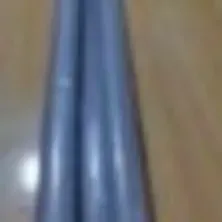edge tape for plywood
The Importance of Edge Tape for Plywood
When it comes to woodworking and furniture design, plywood is a favored material due to its strength, stability, and versatility. However, like many engineered wood products, plywood edges can be rough and unappealing. This is where edge tape comes in, playing a crucial role in enhancing both the aesthetics and durability of plywood projects.
What is Edge Tape?
Edge tape, also known as edge banding, is a thin strip of material that is applied to the exposed edges of plywood and other substrates. It can be made from various materials, including veneer, PVC, melamine, and even wood. Edge tape serves multiple functions it covers unsightly edges, adds a finished look to projects, protects against moisture, and provides additional durability.
Aesthetic Enhancements
One of the primary reasons for using edge tape on plywood is the enhancement of visual appeal. Exposed edges of plywood can appear rough and unfinished, which detracts from the overall professional look of a project. By applying edge tape, you can create a seamless appearance that mimics solid wood or complements the surface finish of the plywood. This is particularly important in furniture manufacturing, cabinetry, and any woodworking project where aesthetics play a significant role.
Durability and Protection
The edges of plywood are susceptible to damage, moisture ingress, and wear over time. Edge tape offers a protective layer that helps prevent chipping and splitting of the plywood. Additionally, it acts as a barrier against moisture, which is critical for maintaining the integrity of the plywood, especially in high-humidity environments. By using edge tape, woodworkers can extend the lifespan of their projects and maintain the quality of the materials used.
Types of Edge Tape
edge tape for plywood

There are several types of edge tape available, each with its unique properties.
1. PVC Edge Tape This is one of the most popular options due to its durability, variety of colors, and ability to resist moisture. PVC edge tape can be easily adhered to plywood edges using heat or adhesive.
2. Veneer Edge Tape Made from real wood, veneer edge tape offers a natural look that is perfect for high-end projects. It can be stained or finished just like solid wood, providing a seamless transition between the plywood and the edge.
3. Melamine Edge Tape This type of tape is typically used in more budget-friendly projects. It comes in various colors and is easy to apply, making it suitable for lightweight applications where aesthetics are not the primary concern.
4. Wood Edge Tape For those looking to maintain a completely natural appearance, solid wood edge tape is an option. Although it requires more skill to apply compared to PVC or melamine, it yields a beautiful finish.
Application Techniques
Applying edge tape can be done using several methods, including manual application with glue, using a dedicated edge banding machine, or employing an iron to melt the adhesive on the edge tape. The choice of method often depends on the scale of the project and the level of precision required. For larger volumes, automated machines can provide a consistent finish, while smaller projects may benefit from hand application.
Conclusion
In the world of woodworking, edge tape is a simple yet effective solution for enhancing the functionality and appearance of plywood. From protecting edges to providing a polished finish, edge tape significantly contributes to the quality and durability of woodworking projects. Whether you are a hobbyist or a professional carpenter, incorporating edge tape into your projects will undoubtedly elevate your craftsmanship and ensure that your work stands the test of time.
-
Under Door Draught Stopper: Essential ProtectionNewsJul.31,2025
-
Garage Door Seal and Weatherstrips for ProtectionNewsJul.31,2025
-
Edge Banding Tape for Perfect EdgesNewsJul.31,2025
-
Table Corner Guards and Wall Corner ProtectorsNewsJul.31,2025
-
Stair Nose Edging Trim and Tile Stair SolutionsNewsJul.31,2025
-
Truck Bed Rubber Mats for Pickup BedsNewsJul.31,2025
-
Window Weather Stripping for Noise ReductionNewsJul.29,2025